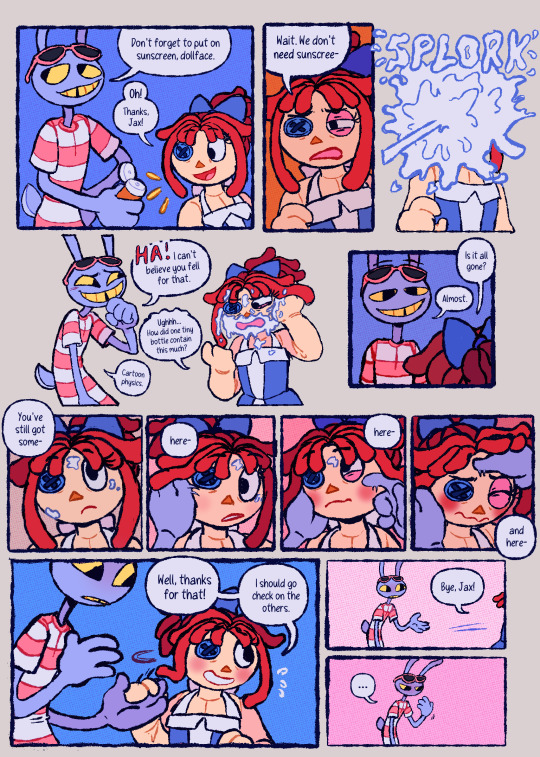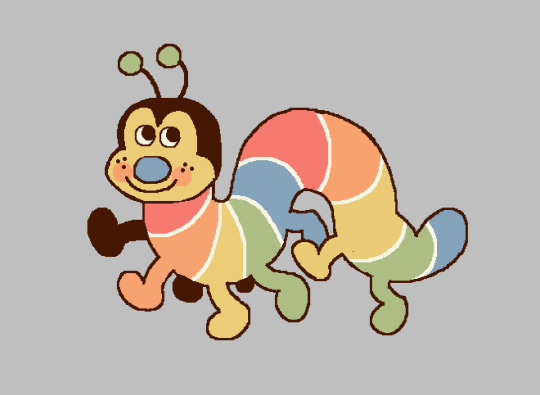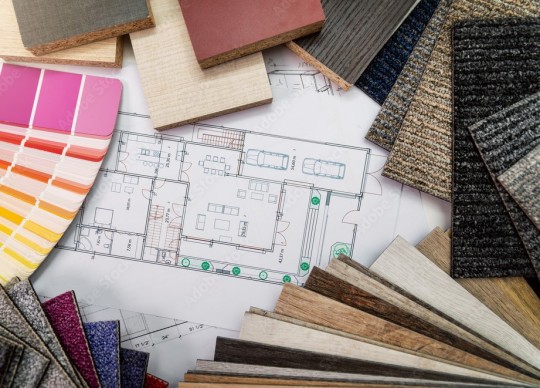#Design Course
Explore tagged Tumblr posts
Text
Unfold 2025: IIAD's Grad Show
Our campus buzzed with the incredible energy of our graduating students from Communication Design, Interior Architecture & Design, Fashion Communication, Fashion Business Management, Fashion Design, and Foundation in Design Programmes, as they showcased their original work to a remarkable lineup of industry leaders from Reliance Brands, Adobe, Landor, DLF and more!
From immersive installations to innovative sustainable designs, every corner of the campus reflected their creativity, talent, and dedication. We were thrilled to welcome visionaries like Tarun Tahiliani, Ramola Bachchan, Sunil Sethi, and many others, whose presence and insights elevated the entire experience. Their support and feedback created unforgettable moments for both students and visitors alike.
Visit us - https://www.iiad.edu.in/
0 notes
Text
École Intuit Lab: Shaping Future-Ready Creatives in India & Beyond
Based in West Bengal, École Intuit Lab is India’s premier global design school, known for integrating international exposure, rigorous academics, and industry alignment in every program. Our campuses are equipped with modern studios, collaborative workspaces, and an environment designed to nurture creativity. From Kolkata to Paris, our students benefit from a truly global network of opportunities, thanks to partnerships with top international universities and companies. We believe in building a new generation of designers — ones who are culturally aware, technologically skilled, and creatively fearless. Whether you’re pursuing art direction, UI/UX design, branding, or motion graphics, our courses are built to match industry standards and anticipate future demands. Choosing École Intuit Lab means choosing a world-class education, mentorship by real-world professionals, and a platform to launch an international design career.
0 notes
Text
Diploma in Graphic Design Syllabus Explained
Curious about what a Diploma in Graphic Design includes? This simple guide breaks it down. You’ll explore the full course outline for graphic design , including key topics from visual design to advanced skills. If you want a creative career, this course is a smart first step.

What You Will Learn in the Diploma in Graphic Design
First, the course starts with design basics. You’ll learn about color, shapes, layout, and type. Then, you move on to real design projects. As a result, you build skills through practice.
In addition, you study how to make clear and creative designs. You also explore how to use space, balance, and images in your work.
After learning the basics, the advanced graphic design diploma adds tools like Photoshop, branding, and digital layouts. Moreover, you work on building a strong portfolio.
Because practice is key, the course includes hands-on tasks. These help you think like a designer. Finally, you’ll be ready to apply your skills in real jobs.
Join Inframe Design School today and master the Diploma in Graphic Design syllabus. Start your creative journey now!
0 notes
Text
Becoming a successful interior designer in Noida or anywhere in the world requires more than just creativity. Interior design is a blend of artistic vision, technical expertise, and industry knowledge. Whether you’re planning to enroll in an interior design course or already working in the field, there are fundamental concepts every interior designer should know to excel in this competitive industry.
0 notes
Text

Doey trio consider what to do about poppy playtime
#myart#chloesimagination#comic#ppt#poppy playtime#poppy playtime chapter 4#doey the doughman#jack ayers#matthew hallard#kevin barnes#I gotta imagine the Doey has this going on in his head at all times#no doubt the three of the kids have to talk out each new situation#with of course one voice taking over now and again#I really wanted to draw Jack Kevin and Matthew interacting#I might do a few of these just to show off what they could of been discussing#it’s genuinely a very fun concept#I hope yall like the designs for them too!!#I’ve done quick smaller things for them before#but took the time to give them more throughout looks
7K notes
·
View notes
Text
#Design Course#Design Course in Ahmedabad#Packaging Design Course#Packaging Design Course Ahmedabad#Graphic Design Institutes#Multimedia Institutes
0 notes
Text



stupid ass elves!!!!
#OF COURSE i had to draw them as well#art#artists on tumblr#digital art#sketch#anime#manga#illustration#animation#visdev#character design#delicious in dungeon#dungeon meshi#dunmeshi#the canaries#cithis#lycion#fleki#otta dungeon meshi#pattadol#mithrun#fantasy#fantasy art#elves
7K notes
·
View notes
Text

They're touch-starved, your honor.
(a shippy follow-up to the touchy beach jax post)
#tadc#the amazing digital circus#tadc jax#tadc ragatha#jax x ragatha#bunnydoll#jax#ragatha#tadc fanart#gooseworx#ria draws#of course i was gonna make bunnydoll with my beach ep designs#1k#beach episode
4K notes
·
View notes
Text

smorkin
#my art#oc#murdoch#dragon#anthro#furry#deer#illustration#i've been fiddling with this for ages lol but i'm leaving it alone now#wanted to render his jacket more but uhhhh maybe the simplicity works better. or i cant render#anyway murdoch is so fun to draw i can't lie. i've been making him worse lately. nastier. more fleshed out#i do love him....and i hate him....and of course i love him....i will put him into a blender. and make art with the viscera#finally figuring out the story he's from and FINALLY designed the protag he'll be deeply involved with#been trying to design this girlie for more than half a year...hopefully i will draw her nicely at some point#anyway PEACE and sorry to the monthly art draw people i have been busy but i will finally do the draw tomorrow
4K notes
·
View notes
Text

drawing with my mouse in ms paint during a zoom call earlier
#original#bugs#*the color scheme was picked from a grainy photo of a rainbow brite bed sheet set that enchanted me#i love more ''realistic'' cartoon bugs of course but this type of design is growing on me lately
3K notes
·
View notes
Text
Fashion Designing Institute In Nagpur
Cadence Academy is the premier fashion designing institute in Nagpur, offering a comprehensive range of courses to give students the skills and knowledge.
Click To Know More: Fashion Designing Institute In Nagpur

0 notes
Text
Dadi Pudumjee | Unfold 2025 | IIAD's Graduation Showcase
Renowned puppeteer and Padma Shri awardee Dadi Pudumjee, a pioneer in contemporary Indian puppet theatre, graced UNFOLD 2025, IIAD’s 7th Graduation Showcase, held during the institute’s 10th anniversary celebration.
Responding to the student work and energy on display, he remarked, “It’s quite overwhelming and it’s huge—and I think it’s excellent. It’s very good.”
Visit us - https://www.iiad.edu.in/
0 notes
Text



More Mecha pilot Jazz AU. Because I have read and reread like ten fics about them in one day
#maccadam#transformers#prowl#jazz#jazzprowl#I love giving Prowl the (-_-) face#it’s enrichment for me#mecha art#mecha pilot jazz au#mecha jp art#oh I also went to see Jazz episode in RiD and ahahahahha his design is awful#I like the way acts it’s fun to see#but oh my god keep that visor in place my dude your face does not look right without it#at least he kept his epic skills. Good for him#and the fact that he reunited with Optimus gives me nice warm feeling. They were so close in books I was really sad that Optimus had to-#-leave Jazz behind when he went to Earth.#Like they loved each other so dearly (in platonic way) and then Optimus died and Jazz wasn’t even there to say goodbye#of course RiD didn’t give me any meaningful content with them interacting but it’s okay I didn’t really expect the Aligned universe to know#their own lore lmao#I’m just happy to imagine how they reunited#oh wait I forgot to tag#Green
3K notes
·
View notes
Text

Factors to Consider Before Choosing a Syllabus
You should carefully evaluate a number of aspects before deciding on a syllabus for an Interior design course in Bangalore
Curriculum:
Curriculums for various interior design courses may differ slightly from one another. Make sure the course outline includes all the essential concepts and abilities you wish to acquire by carefully reading over it.
Teaching Methods:
Think about the resources and instructional strategies listed in the curriculum. There may be more practical exercise in some courses than in others.
Assistance for Students
Find out what kind of assistance is offered to students while they are studying. This can entail having access to career counseling, mentors or tutors, and other tools that can improve your educational experience.
Various Interior Designing Course Types
Certificate/Diploma Programmes:
These are introductory courses that offer a strong foundation in interior design principles. Typically, they last for six months to a year.
Courses for Degrees:
An extensive programme that usually lasts three to four years and offers both academic knowledge and real-world experience through internships and projects is the interior design bachelor’s degree.
Specialized Courses:
Many institutions now offer specialized courses focused on areas that have become more popular due to the surge in popularity of particular interior design styles, such as those found in luxury houses or commercial spaces.
Course Details and Curriculum: What to Expect?
It is crucial to understand the course requirements and content before enrolling in an interior design course. We’ll talk about what to anticipate from an interior design institute in Bangalore in this part.
Core Subjects:
An ideal interior designing curriculum covers a wide range of subjects like principles of design, color theory, Cultural studies, lighting design, building materials & construction methods, CAD (Computer-Aided Design), and sustainability in design.
Hands-on Experience:
A quality interior design programme should include practical experience in the form of workshops or internships with seasoned designers or businesses in the field.
Industry-relevant Software Training:
In today’s digital era, proficiency in software programs like Auto–CAD, Google sketch up, V- ray Rendering, Photoshop are crucial for successful interior designers.
Faculty and Teaching Methodologies: How to Ensure Quality Education?
Choosing the right syllabus for an interior designing course in Bangalore is important. It plays a significant role in shaping students’ knowledge, skills, and creativity in the field of interior designing.
#interior design#interior decor#design course#interior styling#interior inspiration#design school#decorating tips#design education#interior designer#design student#interior design skill#short term course
0 notes
Text
DPxDC Idea
Danny working at Wayne Enterprises as some sort of engineer, uses the in-house app for all his blueprints and stuff
He starts getting notes from a coworker in-app, and assumes its this annoying older guy in his department who constantly undermines him because of his age, despite his education and past achievements (i feel like in this AU the Fentons react well to the reveal and they work together on a number of non-lethal ecto inventions that have Danny's name attached to them)
Except one day his coworker mentions never using the app, and Danny suddenly realizes there's only one other TD he could've been arguing with in the notes of the app
#dp x dc prompt#dpxdc#danny phantom#danny fenton#batman#tim drake#red robin#i have no ideas what happens beyond danny realizing it's been tim the whole time#and having a 'fuck ive been arguing with the big boss' moment#cause of course when he thinks its some asshole from his own department hes snarky as hell#but the ceo??#should he stop with the sarcastic explanations behind his designs?#or will tim think its weird if his tone changes#in my head this does end up being dead tired somehow#just because i love the idea of these two bonding over snarkiness and engineering#and i feel like tim would simultaneously love and hate danny's notes#but also is that actually in character? cause the only batman thing i've read is rhe webtoon#and i know some vague things about canon#but thats it#haven's writing
4K notes
·
View notes